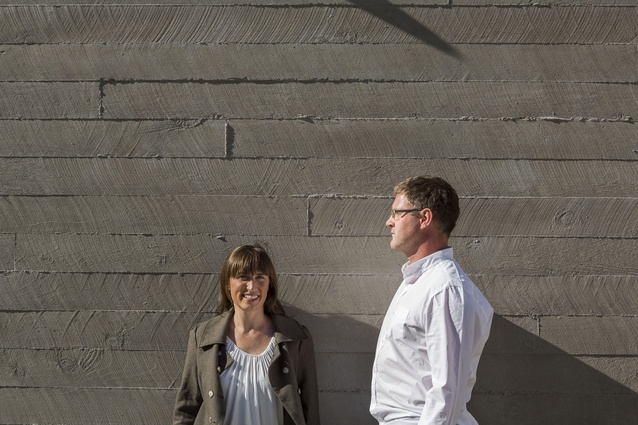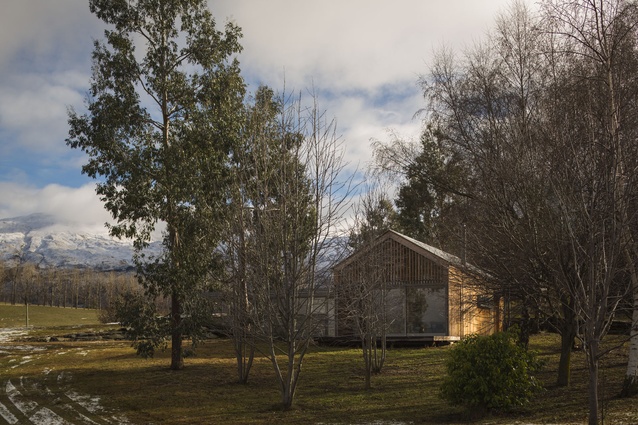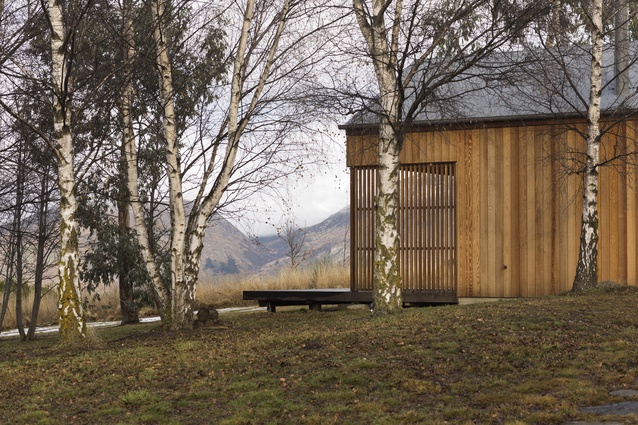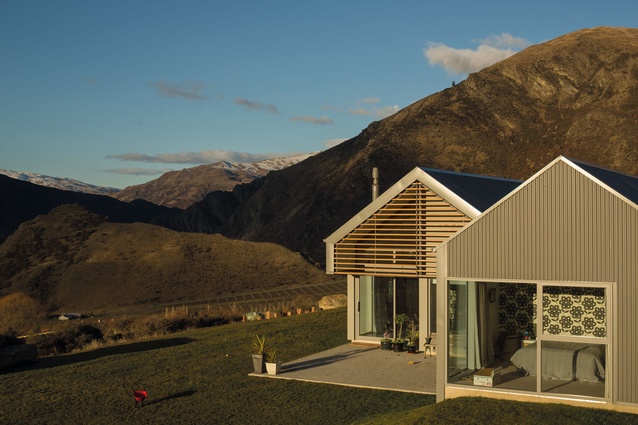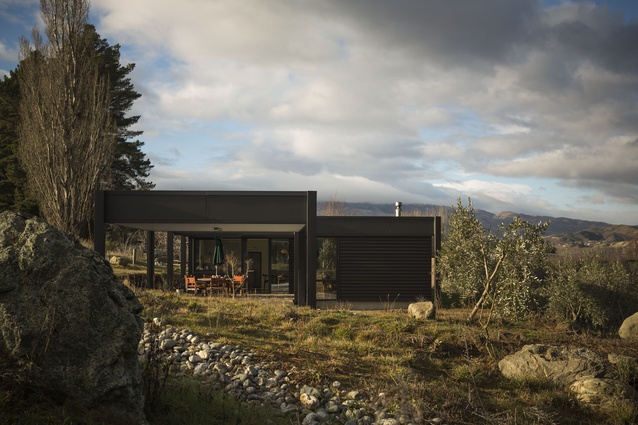Green acres
Back in 2012, Mark Read, 39, and Siân Taylor, 37, decided the best approach to spreading the message of sustainable design and living was to start their own architectural practice. And so, the husband-and-wife team set up Team Green Architects in a small office in the heart of Queenstown.
Together with three staff members, the duo has completed six projects since then. A further nine are in various stages of design and construction, putting Team Green on the path to realising their goal – a mindshift in the New Zealand home-owning public that prioritises efficient energy use, durability, health and safety, indoor air quality, thermal comfort and indoor moisture solutions in architecture.
Urbis: Mark, you have ties to Queenstown through your mother’s family; but Siân, you were born in Wales. How did you come to be living on the other side of the world?
Siân Taylor: I was working as an architect in the United Kingdom but had a yearning for a different sort of lifestyle. I’d never been to New Zealand before, but was working with a woman who was a Kiwi and I just thought, ‘Okay, New Zealand; they speak English, they’ve got mountains for skiing’. I presumed I could get work. My colleague and her husband knew local architect John Blair so I got in touch and that’s where I ended up, which was also where Mark was working. What was to be a six-month stint has turned into nine years.
Urbis: Was architecture always the career goal for each of you?
Mark Read: I was actually enrolled to go to fine arts school before I got accepted into architecture, so I found myself at a bit of a crossroads with a decision to make. Sculpture was what I did at high school, which was what caused the dilemma but, for me, there was a nice crossover between buildings and sculpture. The same rules apply in lots of ways, just on a grander scale.
ST: I also initially enrolled to do something different to architecture – maths and physics. I had thought I’d do maths and physics first and then do architecture. It wasn’t until I got to university that I realised I was looking at spending the next 10 or so years there, so I changed course, quite literally, within the first week.
Urbis: You obviously have a similar philosophy in terms of sustainable architecture. Is that something that you’ve always had or has it evolved as you’ve progressed in your careers?
MR: For me, that mindset came when I met Siân. Up until that point, I hadn’t been exposed to much else to do with building performance outside of what we were taught in architecture school. Siân provided another dimension to that, due to her previous knowledge of the subject from working in the United Kingdom.
ST: I’d been on the sustainable education team in my previous job with Stride Treglown in Bristol, so it was very much a part of what I did. I was really surprised when I came here. I couldn’t quite believe the difference in the way things were constructed; fundamentals of the building code in the United Kingdom weren’t even on the spectrum here. I guess whenever you come from a different place with a different way of doing things and you know the status quo doesn’t have to be, you become passionate about changing things for the better. This is why each one of our houses is designed following Passivhaus standards, which regulate elements such as insulation, air-tightness, passive and mechanical ventilation and space heating, which help create a controlled living environment.
Urbis: Has there been an uptake by the public for energy-efficient houses?
MR: Absolutely. More and more clients are walking through the door looking for, in a broad sense, a more sustainable way to live; either because they have done their research or, like Siân, they have first-hand experience of a better way of living.
ST: They come in varying degrees. Like Mark said, we get those clients who have done huge amounts of research and are also really passionate about sustainability. Then there are those who have a little knowledge and are on board but are looking for guidance. Lastly, there are the clients who know nothing about that side of our practice and it’s only when we actually start explaining our process of energy-efficient design to them that they say, ‘Oh, that’s definitely what I want’.
Urbis: Is it more flattering if a client comes to you based purely on your architectural prowess, rather than as the local experts in sustainability?
MR: We don’t mind how they come but once they come in the door and sit around this table, it’s on. We let them know that this is what they’re signing on for and hopefully there is an agreement that it’s what they also want.
ST: I think there’s been maybe only one client who didn’t want to pursue an energy-efficient build which was a real surprise. And, while that was hard for us to hear, you have to be somewhat philosophical because there’s probably always going to be a level of reticence within a certain sector.
MR: When we made the decision to focus on energy-efficient design, we did so wholeheartedly. We’ve learnt a lot about the science and mechanics surrounding that and we’re combining those elements with some really strong architecture.
Urbis: Housing density is a hot topic of debate and in Auckland, at least, the number of resource consents for high-rise apartment buildings is at an all-time high. Is that a model of living that can find a home in areas such as Queenstown?
MR: One of the discussions down here has centred on creating high-density nodes of accommodation because that actually suits lots of people, especially in Queenstown where much of the population is transient. So, rather than following the urban-sprawl model and having to build in all the additional requirements of traditional housing such as roading and infrastructure, the answer is to go higher in the right places and provide a pared-back version of a living unit. You provide the necessity of shelter while also maximising the existing infrastructure and not over burdening the natural environment.
ST: The urban-sprawl model is happening here, which I find tragic, because you’re using up this beautiful landscape for the sake of a different way of thinking. The most energy-efficient form is a tight form, such as a multi-unit dwelling, simply because if you’re sharing a wall with your neighbour then you’re not losing heat to the outside. Obviously there is more to it than that but it is, in fact, easier to achieve a beautifully designed and energy-efficient apartment building over a suburban-style development, not least because you’re using less materials in the first instance. Through their very nature, modern apartment buildings tend to be controlled, integrated systems. Inherent benefits to this model include lower ongoing running costs and additional health benefits such as lower rates of asthma and the wider social benefits associated with communal living.
Urbis: What would be your dream architectural commission?
ST: For the longest time, I have wanted to create a sustainable, energy-efficient development, which would be a balanced, holistic example of communal living, a real live/work community. There are some really fantastic examples in Germany that follow the Passivhaus model that would easily translate into a New Zealand context.

